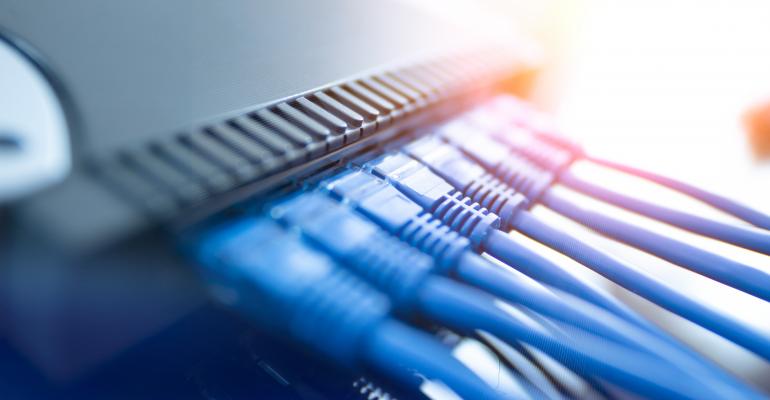Remote network management and monitoring tools are as ubiquitous as vendors' promises of complete oversight and control. Finding the tool or toolsets that can provide the blanket coverage your organization needs requires diligent research as well as a full understanding of enterprise performance and security goals.
Deploying a deficient management/monitoring tool can lead to serious trouble. "Real-time monitoring and notifications are super-important, so you can deal with issues immediately," stated Ian Kelly, vice president of operations for health products firm NuLeaf Naturals. "If you rely on discovering the security breach manually, or even need to log-in to check, you're losing valuable time and increasing vulnerability," he added
Here's a look at the five essential attributes to look for in a remote network management/monitoring tool.
1. Network access management
Access management is an indispensable management function. "A company's security [strategy] ... needs to consider internal threats, which is why access management is so important," said Carla Diaz, co-founder of Internet service provider reviews website Broadband Search. An organization is exposing itself to serious risks if internal users can access any dashboard or networking tool, she noted. "Providing access to specific areas for different employees will just help you stay safer and avoid running into any issues."
2. User device management
With BYOD now the norm in most offices, it's necessary for management to have complete control over user devices. "Especially now that more organizations have transitioned their teams to work remotely, having the ability to manage data at the company-issued device level is critical," said Luca Jacobellis, chief operating officer for IT solutions provider Onepath. "Every laptop and mobile device presents a point of vulnerability—from the risk of an employee getting hacked to ... leaking company data."
Given today's volatile security environment, management needs the ability to wipe an employee’s device at the drop of a hat and immediately restrict the individual's access to enterprise systems. "Otherwise, you run the risk of that employee doing untold damage to your bottom line or brand's reputation," Jacobellis explained. "Your organization is only as secure as your 'human firewall,' and that consists of every remote employee you now have to monitor."
3. Extensibility
Management and monitoring tool vendors can't possibly support every single application, device, model, and version. Even if such a task was possible, vendors still wouldn't be able to manage and monitor proprietary internal applications and processes, observed Dan Murphy, CTO of network security firm Netography. The ability to create your own inputs and outputs through industry-standard APIs is essential, he noted. "Inputs are defined as both state data as well as metadata-describing entities," Murphy said. "Outputs are defined as actions to be performed upon being triggered."
4. Micro-segmentation
In today’s hybrid-cloud environment, in which remote access occurs unpredictably across corporate resources near and far, it's important to have a micro-segmentation capability. Micro-segmentation allows network administrators to identify and define different parts of the network, stated Amit Bareket, CEO and co-founder of cloud and network security company Perimeter 81. More importantly, the approach enables administrators to limit access to specific segments based on user, device, location, and other specific qualifiers. "This least-privilege access model isolates traffic to only where it needs to be and reduces the attack surface of valuable network resources," Bareket explained.
5. Deeper-than-SNMP insight
It's a big mistake to believe that a Simple Network Management Protocol (SNMP) monitor, by itself, is sufficient to support optimal performance and security.
Almost all remote network management/monitoring tools use SNMP to monitor many, if not all, kinds of networking devices, yet most do so only generically. "Smart users need to move well beyond the basics and avoid doing network management on the cheap," said Adam Stern, founder and CEO of cloud service provider, Infinitely Virtual. "Look instead for tools that are designed to analyze the health of your equipment more deeply," he suggested.
In reality, most top-line network monitoring tools return only a few metrics by default. "It's up to [customers] to determine and customize other metrics, a situation that isn’t helped by the fact that most network administrators aren’t themselves experts in all the equipment they own," Stern noted. "Take the task of network management seriously, invest accordingly, and spend the time needed to determine which solution is the best fit for your business," he advised.
Takeaways
One of the biggest mistakes a network manager can make is going with a tool that's popular rather than one that's best suited for enterprise needs. "When you go with the popular option, you can end up paying for irrelevant features that lay idle and take up space," Kelly warned. "Besides, popularity can actually just mean better marketing or a better advertising budget, not necessarily better performance," he added.
Kelly also suggested checking out startup vendors. "They are more boutique in nature and can usually come up with inventive, custom solutions for your business and will be more personal," he explained.






